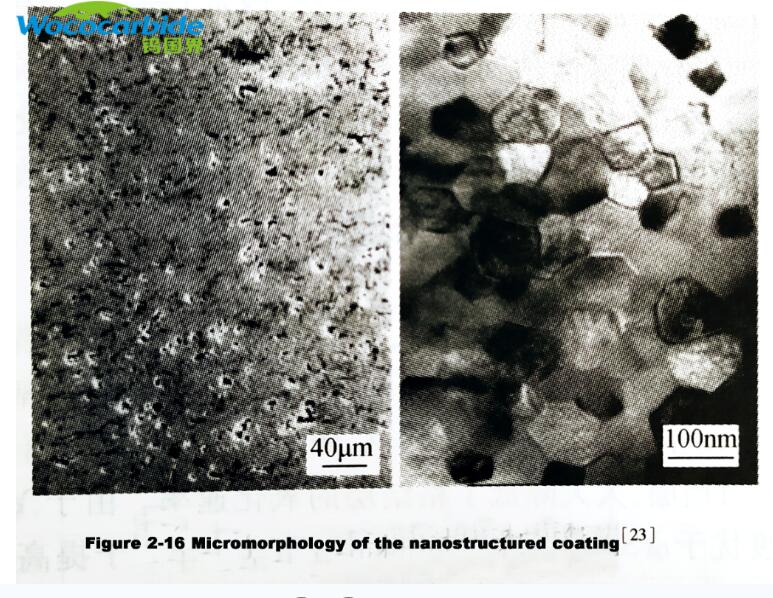

With the deepening and development of nanomaterials research, nanostructured thermal barrier coatings, especially those prepared by thermal spraying technology, have gradually attracted people's attention. The intra-lattice phonon scattering is enhanced, thereby reducing the thermal conductivity of the coating. On the other hand, the nano-thermal barrier coating has excellent mechanical properties, which can improve the reliability of the coating and prolong the service life of the coating.
The surface roughness, microhardness and elastic modulus of atmospheric plasma sprayed nano-zirconia coatings were studied by Lima et al. It is found that the surface of the nano-zirconia coating is relatively smooth, and the microhardness and elastic modulus of the coating increase with the decrease of the coating roughness. The increase in the microhardness of the coating can be attributed to the better flatness of the droplets during the spraying process, thereby increasing the number of contact points with each other. The microhardness ratio of the surface to the fracture surface is 0.78 +-0.13. Chen et al. measured the tensile strength between the atmospheric plasma sprayed nano-zirconia coating and the stainless steel substrate, and the result was 45MPa, which was significantly better than the tensile strength between the traditional zirconia coating and the stainless steel substrate. The prepared nano-zirconia coating has a dense structure and a porosity of about 7%. The pores larger than 10um in the coating are irregular strips, accounting for about 45% of the total pores. The pores smaller than 1 μm are circular and evenly distributed, accounting for about 55%.
Ma et al. prepared low thermal conductivity yttria-stabilized zirconia TBCs (annealed at 1121 °C for 400 h) by liquid-phase plasma spraying. The thermal conductivity was 0.55 W .m-1 at 25 °C ~ 1300 °C. .K-1~0.66W .mt. K-1, much lower than traditional partially stabilized zirconia TBCs, and lower than atmospheric plasma spraying and electron beam physical vapor deposition non-nano coatings. This is due to the presence of nanoscale defect clusters and nanophases formed by doping, as well as the existence of non-equilibrium phases, which reduces thermal conductivity. Padture et al. also used liquid plasma spraying to obtain ZrO2 -7% (mass fraction) Y2O3 nanostructured TBCs, whose thermal conductivity is independent of temperature and is 1.3W .m-1.K-1. Zhou et al. first deposited a NiCrAlY bonding layer on the Ni-based superalloy substrate by low-pressure plasma spraying, and then prepared ZrO2 -8% (mass fraction) Y2O3 nano-TBCs by atmospheric plasma spraying. The thermal diffusivity of the zirconium coating is 2.15 x 10-3 cm2/s~2.75 x 10-3 cm2/s, and the conventional zirconia coating is 2.35 x 10-3cm2/s~2.96x 10-3cm2/s. Chen et al. used the spray-dried and regranulated feedstock to plasma-spray the nano-structured ZrO2-3% (molar fraction) Y2O3 coating on the aluminum substrate. The microstructure and morphology are shown in Figure 2-16. It was found that from room temperature to 1200°C, the thermal expansion coefficients of the nanostructured coatings in the first thermal cycle and the second thermal cycle were 11.0x10-6°C-1 and 11.6x10-6°C-1, respectively. The thermal diffusivity decreases with the increase of temperature. The nanostructure coating is 1.80 x 10-3cm2/s~2.54 x 10-3cm2/s, and the traditional zirconia coating is 2.25 x10-3cm2/s~2.37 x 10-3cm2/s.
Liang Bo et al. prepared ZrO2 -3% (molar fraction) Y2O3 nano-TBCs by atmospheric plasma spraying and prepared conventional TBCs under the same conditions. The coating is based on Ni-based alloy, firstly sprayed with 50um ~ 70um of NiCoCrAIY bonding layer, and then sprayed with 200um of zirconia coating. In the quenching test, the samples were heated to 1000, 1100, 1200 and 1300 °C, respectively, and then taken out after cooling in water for 10 minutes, and blown dry by high-pressure air. This cycle took the coating peeling area about 5% of the total surface area as the coating failure standard. , the results are: the quenching life of nano coating and traditional coating are 118 times, 100 times, 50 times, 10 times and 48 times, 30 times, 28 times and 3 times respectively.
In order to give full play to the potential of nanostructured materials as thermal barrier coatings, several key problems must be solved at present: ① the preparation process of nanostructured feedstock needs to be further improved; ② the development of new thermal spraying technology can improve the performance of the coating 3. The research on the modification of the coating by rare earth elements is not well combined with the introduction of nanostructures in the coating. At present, the research in this area is still very lacking. ④ Further research to clarify the effect of nanophase structure on the macroscopic properties of materials, especially thermal conductivity. ⑤ These materials must be guaranteed to have high thermal stability at the operating temperature of advanced turbine engines (> 1200°C).

Hot information

